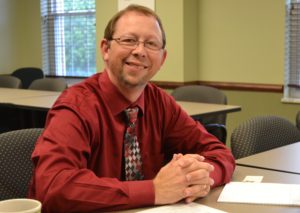Chapter 6 – Disability
6.1 Understanding Disability Bias in Medicine
Camilla Curren MD
Acknowledging Bias Against Persons with Disabilities in the Health Care Setting

Bias against persons with disabilities is longstanding, notes John Moore, CEO/Executive Director of the Ohio Department of Deaf Services. Starting with being called a “retard” in his high school, where he was the only deaf student in his class, Moore has experienced discrimination and bias in health care settings and elsewhere and has developed a prominent career as an advocate for the deaf, helping other hearing-impaired persons reach their greatest potential. Moore, who often finds himself in the thick of debates with insurers over coverage of deaf patients, once considered the field of healthcare law but notes “it was just too dry.”
Moore finds that his experiences are similar to those of others with “invisible” disabilities not immediately apparent to health care providers. Physicians and nurses may mistake agreeable behavior such as smiling and nodding on the part of a patient with disabilities for understanding. “In fact, they just may be too embarrassed to admit that they do not understand what is being conveyed, and medical staff is not aware of this,” he states. This type of misunderstanding, which can lead to medical errors and to disparities in health care delivery to patients who are deaf, can be avoided with the standard use of a medical interpreter, or by the health provider learning basic signing or writing out questions and information on a whiteboard.1,2 “Different persons have different needs like they have different allergies,” Moore contends; paying attention to these differing needs and taking the extra time to allow for personalized adequate communication with patients with disabilities can go a long way towards collecting adequate information and meeting health care goals.1
Identifying Bias in Physician/Patients with Multiple Disabilities
Jody Burris, mother of 37-year old Trisha Burris, affected since childhood by cerebral palsy and severe developmental delay, has had a range of experiences in navigating healthcare for her daughter. She notes that when patients with multiple or more obvious disabilities encounter the medical establishment, their needs for more time and different communication and examination strategies may threaten the provider’s intention to be inclusive in providing unbiased medical care even in the best circumstances.3 Jody feels that whenever possible the patient should be involved in their own healthcare decisions and should be assumed to be able to hear and understand conversations about themselves in the exam room.2 A simple measure like sitting down with and speaking directly to, rather than standing above and talking over, an individual in a wheelchair establishes a level of respect and shared humanity, that reduces bias and defensiveness on both sides.3 While the Burris family has been successful in establishing a comfortable primary care relationship, Trisha and her family continue to search for a dentist who will discuss methods of cleaning and restorative dental work. “I certainly can’t help but wonder if she was a normal 37-year-old with the same situation if the outcome of this particular consultation would have been the same. Her teeth are a health and self-esteem concern as it would be for anyone,” Jody Burris adds.
Jody Burris on Bias Against People with Disability – YouTube Video